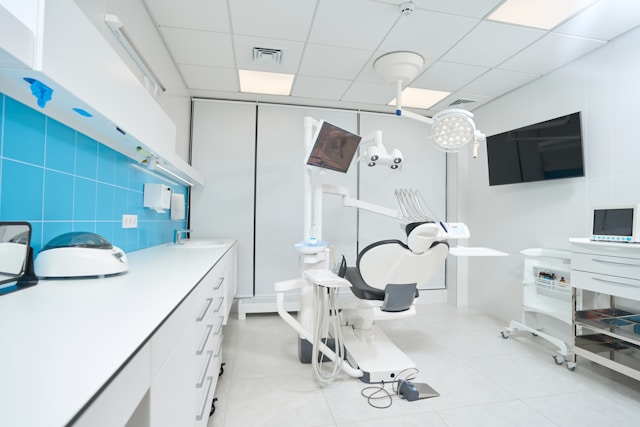진행 메모는 무엇인가요?
경과 기록은 의료 전문가가 환자의 의료 기록을 업데이트하고 유지하기 위해 작성하는 필수 문서입니다.이 메모는 환자의 모든 상황을 기록하여 환자의 치료 계획과 관련된 임상 사례에 대한 자세한 문서를 제공합니다.경과 기록을 작성하면 환자의 상태, 임상적 사고, 치료 계획이 의료 전문가 간에 명확하게 전달되어 검사와 평가에서 얻은 객관적 데이터를 기반으로 맞춤형 치료를 할 수 있습니다.
SOAP 메모로 구성되는 이러한 메모에는 환자의 주요 불만 사항, 현재 질병, 환자의 상태 또는 치료 반응의 중대한 변화와 같은 관련 세부 정보가 포함됩니다.경과 기록은 의료 문서화를 위한 중요한 도구로 활용되며, 각 임상 접종에 대한 정확한 건강 기록을 최신 상태로 유지하여 환자 치료의 연속성을 뒷받침합니다.
진행 기록을 기록해야 하는 5가지 주요 이유
진행 상황을 기록해 두어야 할 이유는 많습니다.이는 의료 문서와 환자 치료에서 중요한 도구로 사용됩니다.몇 가지 주요 이유는 다음과 같습니다.
1.경과 기록은 고객과 임상의사 간의 계약입니다.
치료 계획 목표를 문서화하여 공식적으로 기록되기 전에 환자와 의사 간에 합의한 내용을 요약합니다.이를 통해 치료 계획이 합의된 목적과 방법을 논리적으로 전달하여 제공된 치료를 추적할 수 있는 간결한 수단을 제공합니다.
2.진행 기록은 진료팀 내부 및 진료팀 간의 커뮤니케이션을 제공합니다.
진행 기록을 통해 원활한 임상 문서화가 가능하므로 의료 서비스 제공자는 환자의 병력, 의료 기록, 정신 상태 검사 결과 및 이전 치료에 액세스하고 이해할 수 있습니다.이를 통해 모든 진료팀 구성원에게 현재 발생한 문제, 검사 결과 및 병력에 대한 정보를 제공함으로써 정확한 치료가 용이합니다.
3.진행 메모는 세션 중에 중요한 모든 세부 사항을 기억하는 데 도움이 됩니다.
각 세션에 대한 철저한 기록은 의사가 객관적인 정보를 문서화하고 필수 의료 사실을 기억하는 데 도움이 됩니다.이는 환자의 진행 상황과 치료의 세부 사항에 집중함으로써 정신적 부담을 줄이고 관계를 유지하는 데 도움이 됩니다.
4.진행 메모는 법률 문서입니다.
이러한 메모는 임상 문서에 필수적이며, 제공된 치료에 대한 완전한 책임을 제공합니다.이는 환자의 치료 및 진행 상황을 규제, 보험 및 법적 목적으로 기록할 수 있도록 하는 안전 계획 역할을 합니다.
5.진행 메모는 결과 추적에 도움이 됩니다.
자세한 진행 기록은 시간 경과에 따른 치료 효과를 추적하는 데 필수적입니다.진행 상황을 문서화함으로써 임상의는 치료 계획 목표가 충족되고 있는지 평가하고, 필요한 조정을 하고, 성공적인 환자 치료 결과를 입증할 수 있습니다.
진행 노트로 시작하기
진행 노트를 작성하는 것이 부담스러울 필요는 없습니다.SOAP (주관적, 객관적, 평가, 계획) 및 DAP (데이터, 평가, 계획) 와 같은 구조화된 형식을 사용하여 임상의는 필수 정보를 효율적으로 문서화하여 모든 중요한 세부 사항을 기록할 수 있습니다.
비누 노트 문서를 네 개의 명확한 섹션으로 구성하는 널리 사용되는 형식입니다.
- 주관적: 보고된 증상, 우려 사항 및 치료 계획 목표를 포함한 환자의 관점
- 목표: 임상의의 관찰, 측정 가능한 데이터 및 검사 결과는 세션 중에 문서화됩니다.
- 평가: 주관적이고 객관적인 정보를 연결하여 환자의 상태를 평가하는 분석입니다.
- 계획: 환자의 요구 사항을 해결하는 방법에 초점을 맞춘 다음 세션의 계획된 치료 중재 및 이론적 근거
DAP 노트 핵심 요소에 초점을 맞춰 보다 간소화된 접근 방식을 제공합니다.
- 데이터: 평가, 테스트 및 임상 관찰을 통한 객관적 결과.
- 평가: 데이터의 해석과 환자의 상태 및 치료 계획에 미치는 영향.
- 계획: 향후 방문 및 세션을 위해 계획된 구체적인 목표 및 개입.
두 형식 모두 임상의가 가장 관련성이 높은 세부 사항에 집중할 수 있도록 지원하여 진행 기록을 명확하고 간결하며 유익하게 작성할 수 있습니다.중재 및 분석을 포함하여 환자 방문의 모든 측면을 철저하게 문서화하고 지속적인 환자 진료를 위해 이용할 수 있도록 워크플로우에 가장 적합한 형식을 선택하세요.
진행 노트 작성을 위한 6가지 팁
의료 전문가로서 진행 기록에 필수 정보를 기록하고 환자 치료의 전반적인 질에 기여하는 것이 중요합니다.다음은 보다 유익하고 효과적인 진행 기록을 작성하고 환자 의료 기록의 중요한 구성 요소가 되도록 하는 데 도움이 되는 6가지 팁입니다.
1.구체적이고 간결하게 작성하세요
진행 기록을 작성할 때는 구체적이고 간결한 것에 초점을 맞추세요.의료 종사자는 환자의 상태를 기록하고 불필요한 세부 사항 없이 결과를 명확하게 전달해야 합니다.주관적 데이터, 신체 검사 결과, 치료 목표를 이해할 수 있는 언어로 전달하세요.이렇게 하면 메모를 유용한 정보로 작성하고 다른 의료 전문가가 신속하게 검토할 수 있습니다.
2.진행 기록을 최신 상태로 유지하세요
정확한 의료 기록을 위해서는 진행 기록을 정기적으로 업데이트하는 것이 중요합니다.메모를 최신 상태로 유지하면 후속 세션에서 쉽게 참조할 수 있는 문서화된 자료가 제공됩니다.이러한 관행은 치료의 연속성을 지원하고 여러분과 동료들이 항상 최신 환자 치료 개발 상황을 파악할 수 있도록 합니다.
3.메모의 우선순위를 정하세요
매일 문서화를 완료할 시간을 따로 마련하여 진행 상황 메모의 우선 순위를 정하세요.이렇게 하면 체계적으로 정리할 수 있고 중요한 환자 상태 세부 정보를 간과할 위험이 줄어듭니다.또한 일관되고 시기적절한 문서화는 환자 치료에 대한 정확하고 지속적인 기록을 보장하여 의료 전문가 간의 효과적인 의사 소통과 의사 결정을 지원합니다.
4.템플릿 사용
SOAP 또는 DAP와 같은 구조화된 형식을 사용하면 메모 작성 프로세스를 간소화할 수 있습니다.이러한 템플릿을 사용하면 환자의 주관적 데이터, 신체 검사에서 얻은 객관적 결과, 계획된 치료 목표 등 주요 사항을 문서화할 수 있습니다.템플릿을 사용하면 환자와 마주치는 모든 중요한 측면을 캡처하여 더 많은 정보를 제공하는 진행 상황을 기록할 수 있습니다.
5.메모를 안전하게 캡처하고 보관하세요
보안 활용 실습 관리 플랫폼 진행 노트를 저장하고 관리할 수 있습니다.이를 통해 추적, 검색 및 업데이트가 쉬워지고 환자 치료에 관련된 다른 의료 종사자가 문서에 계속 액세스할 수 있습니다.또한 보안 스토리지는 데이터 보호 규정 준수를 지원합니다.
6.음성 녹취를 고려해 보세요
음성 녹음 도구는 특히 원격 의료 세션 중에 효율성을 크게 향상시킬 수 있습니다.메모를 받아쓰면 환자의 상태와 치료 세부 정보를 신속하게 문서화할 수 있으므로 세션의 흐름을 방해하지 않고도 포괄적이고 정확한 진행 기록을 쉽게 작성할 수 있습니다.
결론
효과적인 환자 치료와 의료 전문가 간의 의사소통을 위해서는 잘 작성된 경과 노트가 필수적입니다.의료 종사자는 SOAP 또는 DAP와 같은 구조화된 형식을 사용하고 보안 플랫폼 및 음성 기록과 같은 도구를 활용하여 시기적절하고 간결한 문서의 우선 순위를 지정함으로써 환자의 상태를 정확하게 반영하고 지속적인 환자 교육 및 치료 계획을 지원하는 유익한 경과 기록을 작성할 수 있습니다.




.jpg)

.jpg)

.jpg)

.jpg)

.jpg)
.jpg)


.jpg)
.jpg)


.jpg)



.jpg)
.jpg)
.jpg)
.jpg)